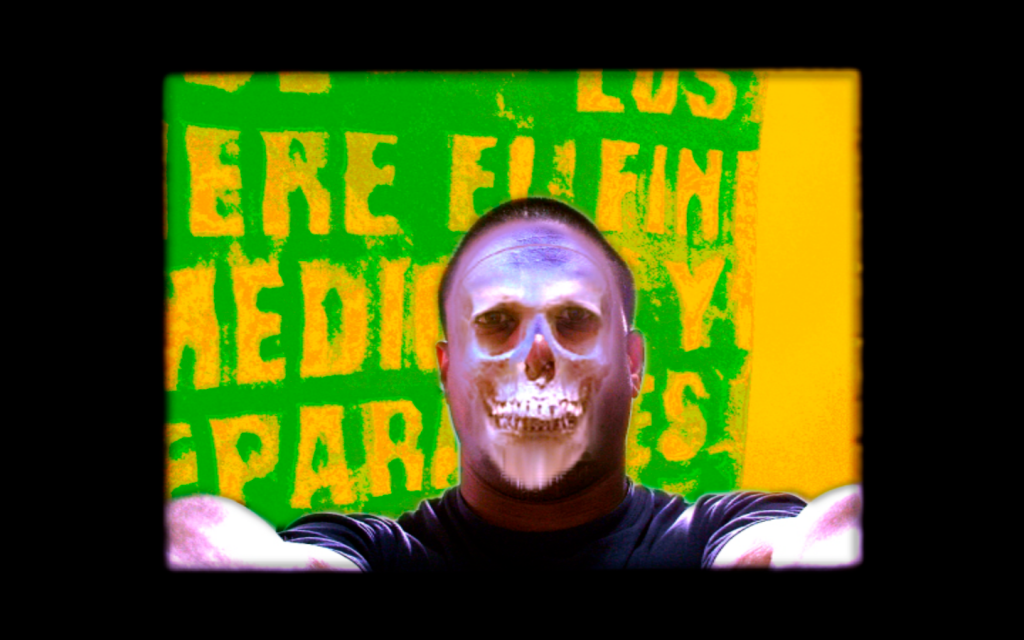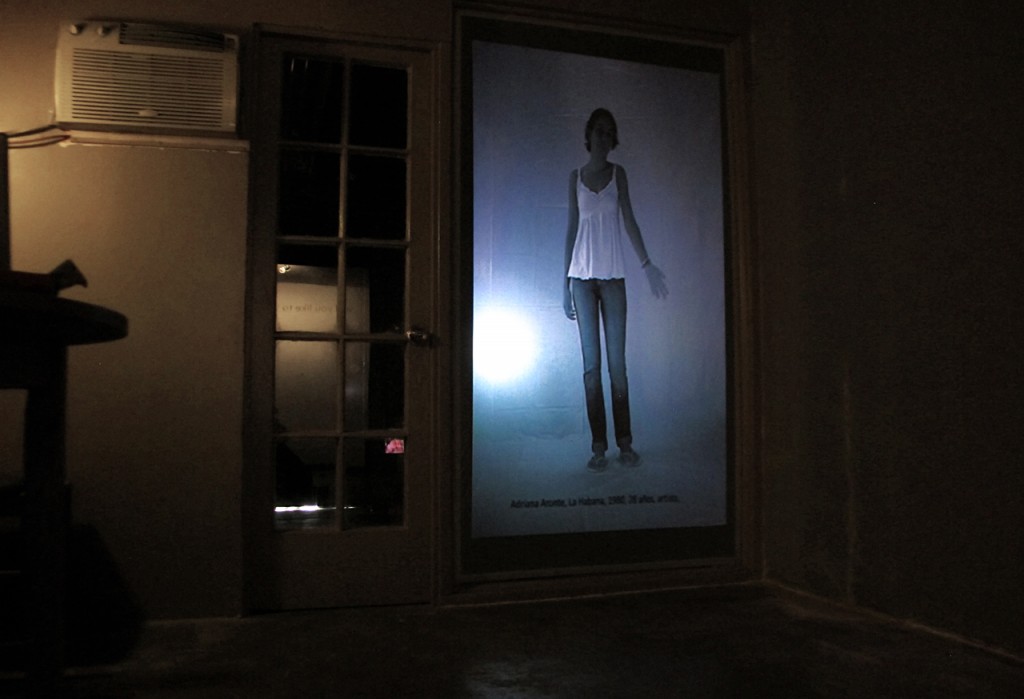
Crawl into “The Cave” and see the light
Glexis Novoa, one of Miami’s more prominent artists, has a studio in a just out of the way location north of Wynwood, where he will also start exhibiting art in the front rooms. The purpose, he says, is to give a voice to art that otherwise might not be heard in the commercial gallery world. Novoa joins some other artists, such as Adalberto Delgado and Robert and Kristen Thiele, who have opened up space for this same purpose. It’s a great trend, one with only positive benefits for the growth of Miami’s artistic community.
To inaugurate his space in Little Haiti, Novoa invited an artist visiting from Havana, Luis Gomez, to intervene in his front rooms. Called “The Cave,” experiencing this artist’s work at this location is indeed like crawling in — and then discovering — a cave.
As background, Gomez’s work is part of collections all over, from Europe to the United States, and he is chair of the New Media Lab at ISA, Havana. He was just visiting the U.S. to participate in a residency in Phoenix, Ariz., which ended in a collaboration with two other artists. It, in turn, will be shown at the upcoming Havana Bienal, where he will also curate a multimedia exhibit.
But back to the darkened, very enclosed space in front of Novoa’s studio. With low ceilings and walls painted in various colors, the space is claustrophobic, in an international way. In the “foyer” as it were, is simply sound, classical music, with the back screen of a video glowing. Walk into the second room and that video reveals itself to be interviews with a number of young artists in Havana, answering questions about the practice, the infrastructure, the place of art in their city. But although the questions are posted, the answers are unknown — music is still the only soundtrack and the voices are mute. The Spanish title refers to the “traders” and “traded,” or the slave trade.
Gomez explains that his work is less political and more a “communication process that occurs during the encounter between viewer and work. Consequently, the use of space and the different media act as an investigative tools that contribute to a sense of freedom devoid of the intervention of ‘the rational victory’ that moves the contemporary insight.” On the facing wall, just above the floor, Gomez projects another, small video, another “process of discovery,” but in this case a very personal one, colorful and frenetic (the images of faces and street scenes are speeded up exponentially), called “Spinning Washing Machine.”
Then you move in the sparse, off-white painted brick room, where the line “would you like to buy my misery” is carved into the back wall. This was first shown two years ago in Havana. It is certainly disconcerting. The debris from the process of carving these words, the bits and pieces of concrete and dust, remain on the floor. And only three dim lights show it off. This is a jail cell, a prison devoid of thought and ideas, where “misery” is being hawked, from an island that has lots of misery to sell, but much else is stifled. But there is a thread of a connection to this exhibition in Miami, as this show exists outside the commercial gallery and the almost ubiquitous art fair, where here that is where art is hawked, sometimes at the expense of our own creativity and growth. On both sides of the Florida straights, new outlets and expressions can only grow our world.
“The Cave @ Big-E Studio,” through April 14, 5300 N.W. Second Ave., Miami; by appointment, 786-222-7536; [email protected].
Recent Content
-
Artsarticle ·
-
Artsarticle ·
-
Artsarticle ·

